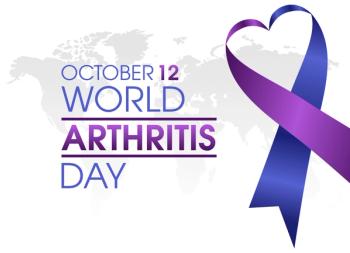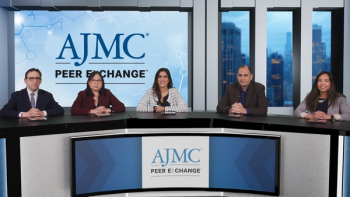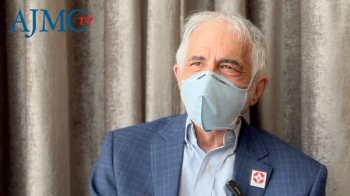
The Underlying Pathophysiology of Pulmonary Arterial Hypertension
Charles Burger, MD: Pulmonary hypertension really refers to a state where the right heart is generating high pressures to circulate the blood through the lung. Pulmonary arterial hypertension is a subset of patients with pulmonary hypertension, and, in fact, represents a smaller percentage overall of all of the patients that might have pulmonary hypertension. Overwhelmingly, patients with heart disease and lung disease, that may affect the lung and affect the pressures, are the most common patients with pulmonary hypertension. But, they are not appropriate patients to be diagnosed as pulmonary arterial hypertension nor are they appropriate patients to be treated with pulmonary arterial hypertension medications. Pulmonary arterial hypertension really refers to what’s going on in the tiny blood vessels that feed the alveoli; ie, blood circulating through pulmonary arteries and capillaries to pick up the oxygen to circulate back to the left heart to be distributed systemically. Those small vessels are diseased in a way that they are narrowed. This is primarily due to what’s happening to the cells that are lining the pulmonary arteries that grow out of control, and they obstruct the lumen of the vessels, narrowing the vessels.
In addition, the walls are abnormal in a way that causes the lumen of the vessel to be constricted. So, as that narrowing of these pulmonary arteries occurs diffusely throughout the lung, then the resistance to the blood flow rises. If the resistance to the flow rises, then the right heart has to generate a higher pressure and overcome that resistance, ie, pulmonary hypertension, which is due to that increased pulmonary vascular resistance. Those patients do have pulmonary arterial hypertension and are indeed ones that you might consider for medications. However, more work has to be done once you identify a patient with pulmonary arterial hypertension to make sure, for example, that they don’t have chronic thromboembolic disease, which is a subset of patients who get pulmonary emboli, and that has to be screened for and eliminated as a possibility just as an example.
If you feel like this is more traditional pulmonary arterial hypertension, then there are even subgroups of those patients. There are some patients for whom no real explanation is identified. Those are called idiopathic pulmonary arterial hypertension. There are some groups in which a risk factor for pulmonary arterial hypertension might be identified such as connective tissue disease, most classically scleroderma. It’s important to know that because they respond a bit differently to the medications, and their prognosis is affected by whether or not they have the risk factor. So, at a high level, pulmonary hypertension is elevated right heart pressures. At a more narrow level, if it’s due to the narrowing of the vessels with high pulmonary vascular resistance, that’s pulmonary arterial hypertension. But even within that subgroup, more testing has to be done to identify what’s called group 1 pulmonary arterial hypertension. These diagnostic groupings have come out of the World Health Organization, and American College of Cardiology, and the pulmonary societies, as the best way to classify the diagnosis and help clinicians make decisions regarding treatment. Unfortunately, the manifestations of the disease, even though it’s due to narrowing of these pulmonary blood vessels, is the impact on the right side of the heart. So, when the right heart enlarges and cannot generate enough forward flow, enough contractility, that’s when the patient becomes symptomatic. And, indeed, untreated, pulmonary arterial hypertension will lead to progressive right heart failure and that would be why they would die. So the disease is in the lung, it’s in the pulmonary circulation, but the manifestation of it from both symptoms and prognosis is the impact on the right heart and the right heart’s ability to compensate for the problem in the lung circulation.
Pulmonary arterial hypertension untreated has a median survival of approximately 2.8 years. So, basically, about half of the patients will succumb to the disease in that time frame. With modern treatments available, it appears that the survival has improved significantly such that at five years, two-thirds of the patients are alive. Clearly, that’s not the goal. The goal is to have an even larger number of patients alive and obviously functional so that they are able to perform activities of daily living and enjoy their life, maintain employment, school, whatever their activity is. It appears that it’s probably a multifactorial improvement in the prognosis. It could be that there’s some of what we call selection bias where we’re identifying pulmonary hypertension in patients who have a milder form of disease that wasn’t really diagnosed 2 or 3 decades ago. So that, of course, could dilute the mortality rate.
Secondly, the drug therapies, when compared to risk-stratified historical controls, certainly do appear to improve outcomes. So the therapies that are available, I think, are having an important impact.
Thirdly, as with all diseases, as education about how to make a proper diagnosis and how to proceed with proper therapy, the general care of the patients improves and they’re followed more frequently by the physicians. The care in the hospital improves. So the whole system elevates their expertise and their attention to treating this disease which results in an additional impact. Regardless, we’re very pleased with the fact that survival is improving. We’re hoping that in large part it’s due to the improved level of care and obviously the pharmacologic interventions.
Newsletter
Stay ahead of policy, cost, and value—subscribe to AJMC for expert insights at the intersection of clinical care and health economics.
















































